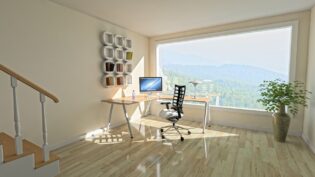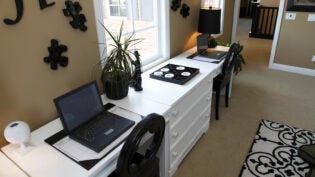Why Your Employees Hate Your Open Office Layout, Part I
By: SmallBizClub

The open office trend has reached dangerous levels. Nearly 70 percent of offices have open layouts that are characterized by areas with no partitions and cubicles with low or high partitions, according to the International Facility Management Association. However, open office workers are less satisfied with their surroundings, stress levels and productivity.
Even the primary employee benefit of open offices—collaboration—is in question. Although workers’ accessibility to colleagues and team members is an assumed advantage for open offices, field research rejects this hypothesis. Some contend that open plans actually discourage communication among colleagues and team members, due to a lack of confidentiality. A study of more than 42,000 people revealed that open office workers were more dissatisfied with “ease of interaction” than those in enclosed offices.
As the open office trend increases in popularity, so too does the understanding of its shortcomings. A number of studies offer insight into how the open office environment distracts employees and negatively impacts their health, productivity and job satisfaction.
Distraction in Open Offices
Too Much Noise
There is little doubt that noise is the primary culprit for distraction in open offices. In an analysis of more than 100 studies, the International Review of Industrial and Organizational Psychology said that noise “has often been reported as the greatest issue of dissatisfaction that staff raise when questioned about their open-plan work environments.”
Noise was the main indoor environmental problem in open offices, according to a 2008 survey of workers in private rooms and open offices led by Annu Haapakangas. Half of open office workers were dissatisfied with office noise, compared to 20 percent of those in private rooms. Although telephone sounds and other office noise was distracting, speech was particularly frustrating—48 percent of respondents said it was the most distracting source of office noise. Employees on average wasted 21.5 minutes per day due to conversational distractions, making speech the top cause of reduced productivity.
Related Article: Office Design Lessons from Innovationland
Speech makes concentrating in open offices virtually impossible. “We have the capacity for about 1.6 human conversations, so if you’re listening to one conversation particularly you’re only left with 0.6 for your inner voice that helps you write,” sound expert Julian Treasure said in a TechRadar interview. Treasure estimates that workers in open offices are 66 percent less productive than when working privately.
Employees may have little recourse in blocking office noise with music or white noise. A review of research published in Psychology of Music found that while background music can improve one’s emotions, it negatively impacts the reading process and memory. White noise was an improvement on typical office noise conditions in an Environment and Behavior study, but subjects in “the no noise group performed best on a measure of cognitive complexity and were the least disturbed and stressed by the environment.”
Blocking office noise may still be preferable. Headphones are a popular way to regain control of noise in open offices, even if it ironically comes at the cost of collaboration. Control is vital. An article in the Journal of Applied Psychology argues that uncontrollable noise is associated with decreased motivation. When given control over noise, individuals can “largely ameliorate the aftereffects of noise.” As a result, the learned helplessness of uncontrollable noise is combated, perhaps offering employees a choice of the lesser evil.
Lack of Privacy
Privacy is an important consideration in any workplace environment because a sense of privacy boosts job performance. When workers aren’t isolated from their surroundings, they can feel a lack of privacy and control over their workspace.
According to the Journal of Architectural and Planning Research, sharing facilities and workspace with others can lead to a psychological state known as crowding, which affects behavior. Risks in the open office—including interactions, noise, unwanted observation and printers in the common workspace—undermine privacy and comfort. As a result, these factors can cause office workers to “have difficulty concentrating, react negatively to interactions and become dissatisfied with their job.”
Ergonomics comes to a similar conclusion, in a review of 49 open office studies: “Strong evidence was established that working in open workplaces reduces the office worker’s psychological privacy and job satisfaction.”
 Author: Brian Neese has been writing about online education for more than five years, with specialties in health care, business and education. In his spare time, he enjoys sports, movies and spending time with family and friends. This post originally appeared on the Rivier University website.
Author: Brian Neese has been writing about online education for more than five years, with specialties in health care, business and education. In his spare time, he enjoys sports, movies and spending time with family and friends. This post originally appeared on the Rivier University website.
4919 Views














